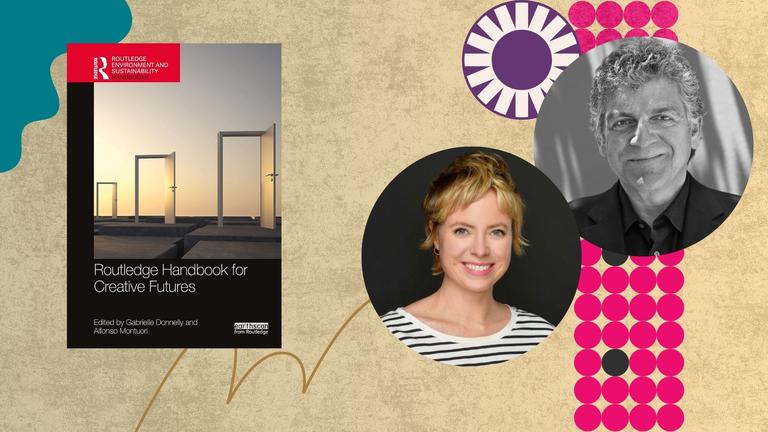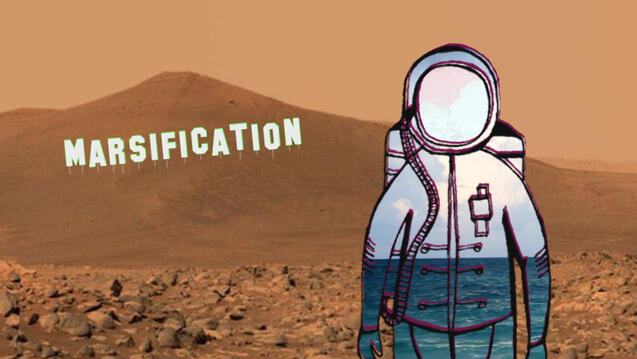Humanistic Astrologer Jessica Lanyadoo returns to CIIS Public Programs for a conversation with Associate Professor Sonya Shah on individual and mutual healing using the guidance of the cosmos and the power of community.

How Dare We Dream?
A new review of the Handbook for Creative Futures, edited by CIIS lecturer Dr. Gabrielle Donnelly and Professor Alfonso Montuori, celebrates its value as a guide to finding hope in hard times.
“How dare we dream of flourishing futures for all?” asks Elizabeth Walsh, reviewing the Routledge Handbook for Creative Futures, which was co-edited by CIIS Transformative Studies alumna and lecturer Dr. Gabrielle Donnelly and core faculty member Professor Alfonso Montuori. It also features work from multiple other CIIS faculty and alumni, as well as contributors from across disciplines and the globe.
Reviewing for the Journal of Awareness-Based Systems Change, Walsh’s piece “The Limits of Modernity Toward Enlivening Futures of Blessed Unrest and Complex Joy” examines and celebrates the Handbook’s pushback against a pervasive culture of despair deepened by the polycrises of the present era – environmental, epidemiological, and geopolitical.
Planned, written, and edited in the period spanning the COVID-19 pandemic (2019-2023), the Handbook is itself a testament to human thriving in the midst of disaster. Donnelly and Montuori, in their own words, strove to “find a sweet spot somewhere between despair and naive optimism, neither shying away from the massive socio-environmental planetary challenges currently facing humanity, nor offering feel-good solutions.” They set themselves and their co-contributors the challenge of countering what they see as an “absence of political vision and alternative futures,” and Walsh finds that they have more than achieved that aim. The volume, which includes 37 chapters written by 52 contributors, manages to be simultaneously theoretically rich and future oriented, while also serving as a practical survival guide.
The editors group the chapters into five sections, structured as a toolkit, which offer context on creative futures; guidance on new orientations and reframings; reckoning with the past and present; frameworks, approaches, and applications; and personal, relational, and collaborative practices. Walsh appreciates the pragmatism of this approach and cites the inclusion of many voices from intersectional movements for liberation and regeneration, who offer not only theoretical interventions but the wisdom of direct experience in creating change. Contributors include scholars, practitioners, and activists from a diverse cross section of gender, race, ethnicity, ability, and geography.
Overall, Walsh finds that the Handbook more than achieves its aims of creating hope in hard times, not just within each text, but also in the spaces between them. She identifies a number of synergistic thematic conversations that emerge across the chapters and sections. The Handbook, she finds, invites readers to grow beyond the limits of modernity; toward reparative and regenerative flourishing; through blessed unrest and complex joy; and emboldened by (r)evolutionary love for people and place. In Walsh’s view, this text is an excellent guide to paths “guaranteed to afford us the delights of good trouble and being fully alive in our living world.”
Read an Interview with Gabrielle Donnelly and Alfonso Montuori
Related News
CIIS Professor Emeritus and founding director of Philosophy, Cosmology, and Consciousness Richard Tarnas returned for his beloved annual lecture exploring the deeper currents of our time.
Zara Zimbardo and Lily Stone collaborated on the new album Marsification: A tale of planetary grief, featured on Radio 4’s Short Cuts.



